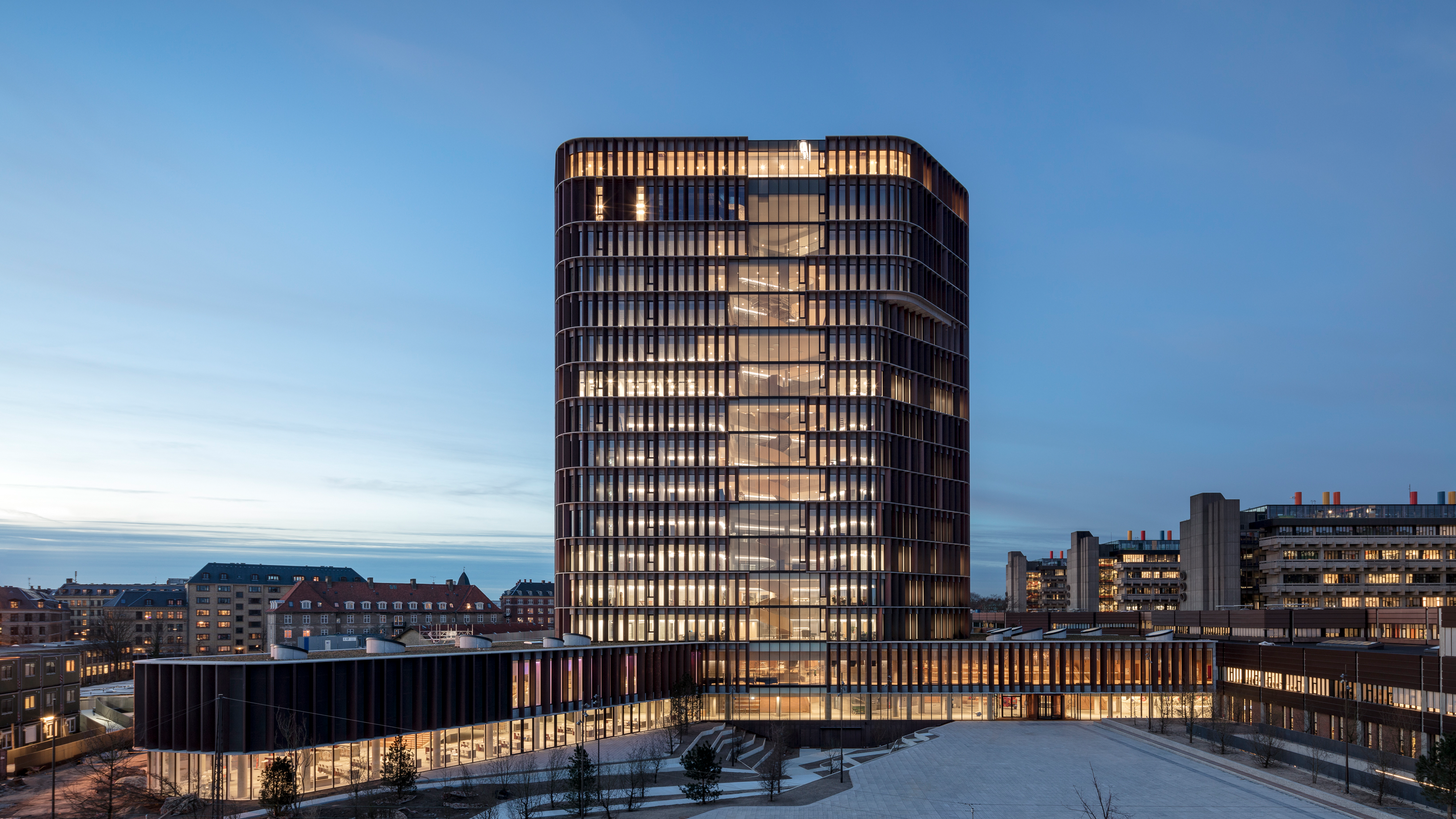The Maersk Tower

In June 2017 The Panum Institute in Nørrebro was expanded by 42,700 new m2 to accommodate new, modern biomedical laboratory facilities, classrooms, an auditorium, canteen, bicycle storage and a new main entrance. The building is called the Maersk Building and is 75 meters tall with a public viewing point at the top.
The new building ensures world-class laboratories for cutting-edge researching within fields that are crucial for the future treatment of cancer, dementia, diabetes, heart disease and allergies.
Utilise experiences from all universities
The current Panum complex was built in the 1970s and 1980s, and the new building is a much-needed expansion of the capacity at Panum. With a height of 15 floors, the new building is a landmark for Copenhagen and the University of Copenhagen.
The budget was DKK 1,5 billion. The A. P. Møller and Chastine Mc-Kinney Møller Foundation for General Purposes contributed with a donation of DKK 655 million.
The Danish Building and Property Agency was the developer and is responsible for the construction of the Maersk Tower and for all the other modernisations of laboratories at our universities, and therefore has a unique opportunity to collect, process and make use of the experiences from across the universities.
Open, green area
The building sets the stage for a more outward-looking interaction with the surroundings and follows the line of thinking in the neighbourhood project "Science City North Campus", which is a project that provide a better link between the University of Copenhagen, Copenhagen University Hospital, De Gamles By nursing home, Fælledparken community park and Nørrebro's other neighbours and enterprises. After the initiation in 2017, Panum has opened itself up to the outside world with green park areas and a square in front of the new 15 storey research tower.
